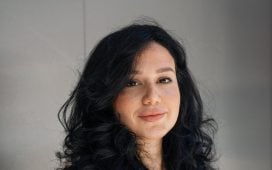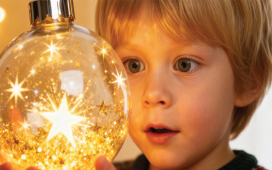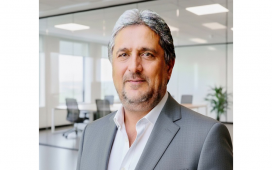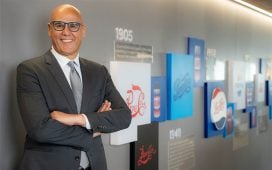
Multimedia solutions—blending cutting-edge technology with innovative storytelling—are key drivers in MENA’s brand media landscape, shaped by digital advancements and evolving consumer behaviours.
Interestingly enough, brand launches, also known as special campaigns, are increasingly becoming part of the entertainment market, with their revenue projected to reach 46 per cent of total revenues by 2024, a 3 per cent increase that outpaces global trends.
As new technologies advance, branding campaigns are becoming highly targeted to audience emotions, offering consumers engaging shows and experiences as part of their leisure activities. This shift shows how brands are moving beyond traditional advertising to create immersive, multi-sensory experiences that truly connect with audiences.
Why are multimedia solutions so effective for brands?
The answer lies in how we process information. High-quality visuals and sound are powerful attention-grabbers — over 90 per cent of information transmitted to our brains is visual, making images and videos essential for effective brand messaging. A vivid example is the drone show at the Dubai Shopping Festival (DSF) that is lighting up the Dubai skyline at Bluewaters and The Beach opposite JBR from December 6, 2024, to January 12, 2025.
Research shows that people retain information better when presented in multiple formats, combining images, audio, and video to create memorable stories. In fact, this is one of the underlying reasons why brands are now using techniques that museums and exhibitions are also using.
Take, for instance, The Legend of Titanic at Madrid Artes Digitales (MAD), which combined historical narrative and advanced multimedia design – detailed interior recreations, survivor accounts, period music, and interactive displays. This immersive exhibition also seamlessly integrated VR, 360° projections, and hyper-realistic sound design, creating a profoundly engaging emotional experience as well as fostering a deep connection with the audience.
One thing is clear: multimedia solutions are highly scalable, allowing brands to distribute content across various platforms without compromising performance. Their multimedia assets — from logos to videos — retain visual integrity across different applications, strengthening brand recognition and ensuring consistent messaging. This adaptability means brands can confidently grow their multimedia strategies alongside their audience, reassuring them in the ever-changing media landscape.
Brand media in the MENA region – what sets it apart?
In recent years, there have been fewer brand launches in the MENA region, particularly in the automotive sector. The reasoning behind this is simple: local audiences crave technological shows at events, while regional brands strive to set trends rather than follow global ones. This push for innovation goes hand in hand with cultural sensitivity and localisation strategies, a priority that brands increasingly embrace.
For instance, Nissan’s Patrol campaign illustrates this trend in real life. Built around the slogan “The Hero of All Terrain,” it featured a dynamic sequence showing the vehicle driving through diverse landscapes — from deserts, forests, and countryside hills to modern city highways. Furthermore, the presentation traced the Patrol’s journey from its 1951 debut to today’s latest models, seamlessly connecting tradition with modern appeal and expectations.
Similarly, the Beyond Lexus LX campaign offers another example of how brands adapt their strategies to resonate with MENA audiences. Speaking specifically, the campaign created emotional connections through immersive storytelling and a multimedia pyramid inspired by local architecture, customs, and traditions. Lexus successfully positioned itself as a brand that understands and caters to the unique preferences of the region, incorporating elements that resonate with Middle Eastern consumers’ aspirations.
There is also a growing interest in presentations that resonate with local cultures. Brands strategically use local dialects in their advertisements, particularly during national events, to build authentic connections with their audience.
Qatar National Bank (QNB) demonstrated this approach when it partnered with Visa to launch its Date to Remember campaign during Qatar National Day. The campaign masterfully combined national holiday celebrations with exclusive cardholder benefits, tapping into local pride and cultural significance.
Likewise, Emirates Airlines integrates regional dialects in its marketing to deepen connections with its diverse customer base. The airline enriches passenger experiences during national celebrations by offering traditional Emirati dishes and featuring Emirati cultural content in their in-flight entertainment.
The future of brand media: AI, VR, and AR
In 2025, cutting-edge technology will take centre stage in brand media campaigns. For instance, AI will analyse consumer data to create personalised launch experiences, tailoring content to individual preferences and increasing engagement. At the same time, VR will host virtual product launches, reaching a global audience without physical venues, thus reducing costs and logistical challenges. AR, in turn, will make launch advertisements more engaging by adding interactive elements, increasing consumer interaction and the campaign’s effectiveness.
However, amidst all these technological advancements, one fundamental truth remains: people crave connection. In the MENA region, brands are mastering the art of connection through products, stories, emotions, and shared experiences that linger long after the screen fades to black.
By Ilya Balakin, Head of the Creative Department and Partner at Sila Sveta.









